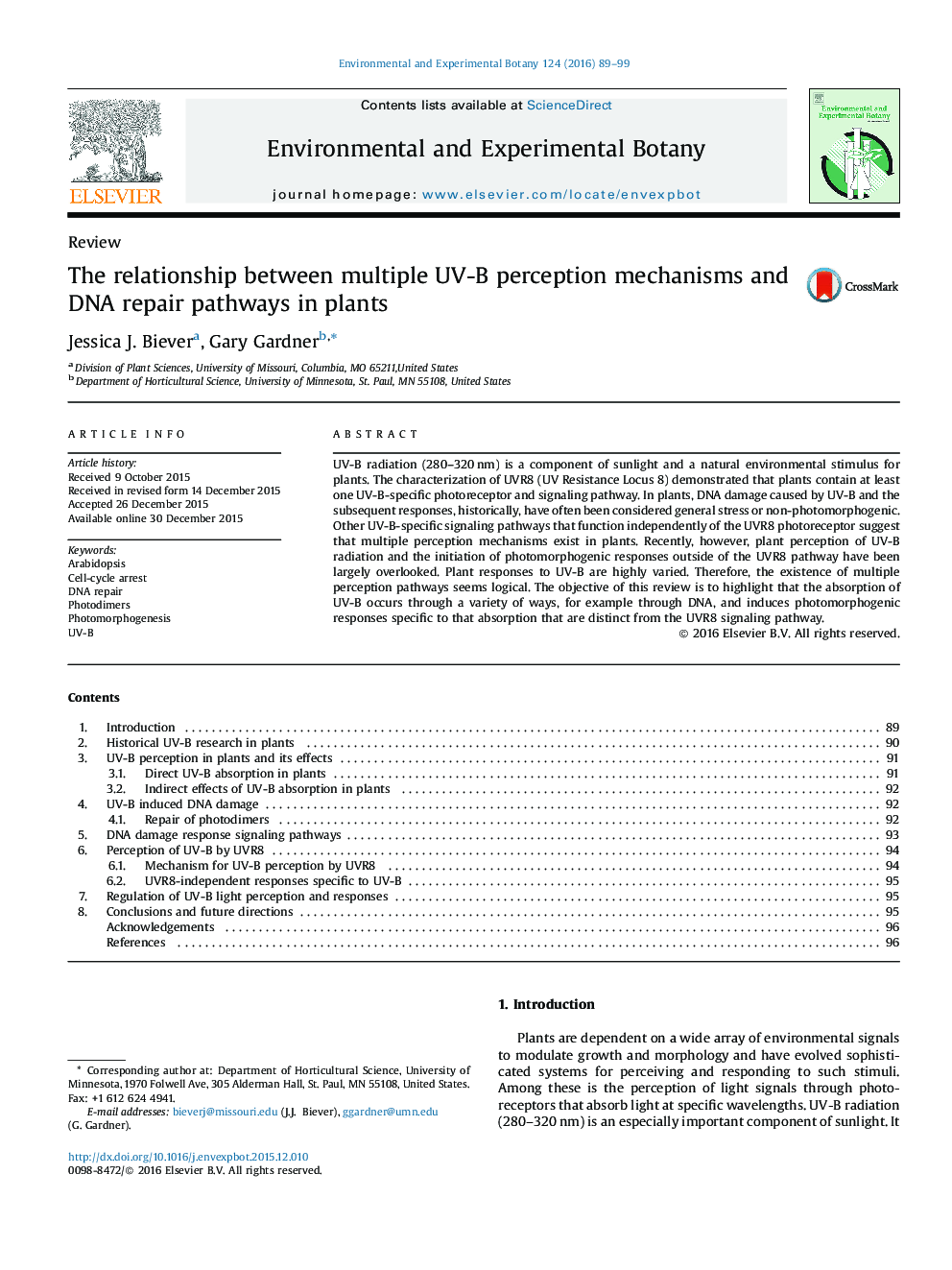| Article ID | Journal | Published Year | Pages | File Type |
|---|---|---|---|---|
| 4554185 | Environmental and Experimental Botany | 2016 | 11 Pages |
•Plants have multiple perception mechanisms for UV-B light.•UVR8 does not account for all UV-B-specific responses in plants.•UV-B is also perceived through direct absorption by DNA and photodimer formation.•Accumulated or unrepaired photodimers can lead to cell-cycle arrest.•UV-B-induced cell-cycle arrest results in photomorphogenic responses.
UV-B radiation (280–320 nm) is a component of sunlight and a natural environmental stimulus for plants. The characterization of UVR8 (UV Resistance Locus 8) demonstrated that plants contain at least one UV-B-specific photoreceptor and signaling pathway. In plants, DNA damage caused by UV-B and the subsequent responses, historically, have often been considered general stress or non-photomorphogenic. Other UV-B-specific signaling pathways that function independently of the UVR8 photoreceptor suggest that multiple perception mechanisms exist in plants. Recently, however, plant perception of UV-B radiation and the initiation of photomorphogenic responses outside of the UVR8 pathway have been largely overlooked. Plant responses to UV-B are highly varied. Therefore, the existence of multiple perception pathways seems logical. The objective of this review is to highlight that the absorption of UV-B occurs through a variety of ways, for example through DNA, and induces photomorphogenic responses specific to that absorption that are distinct from the UVR8 signaling pathway.
